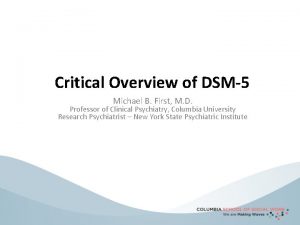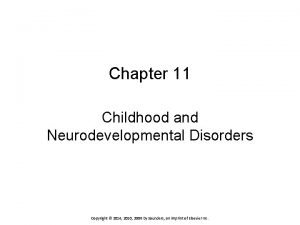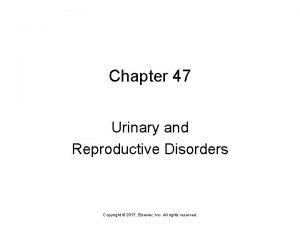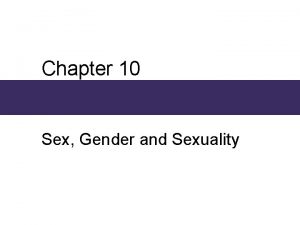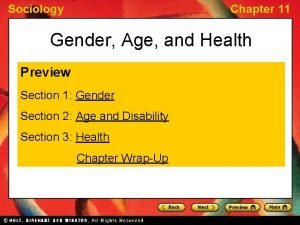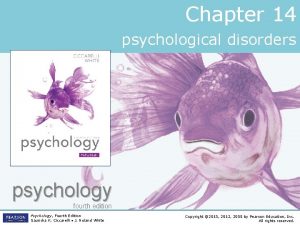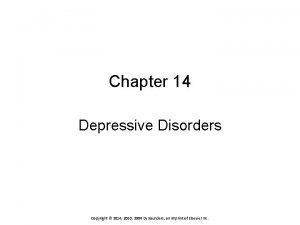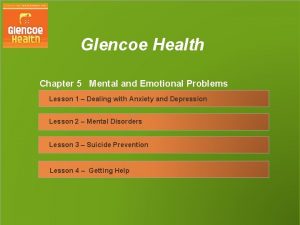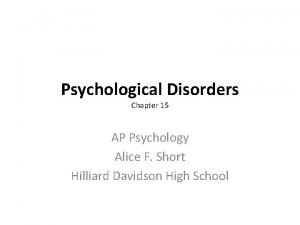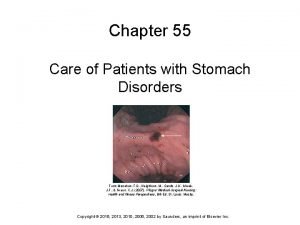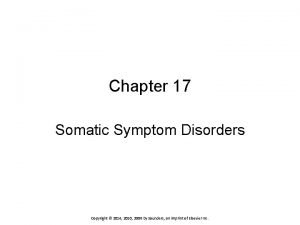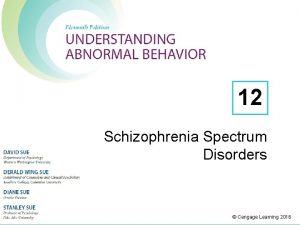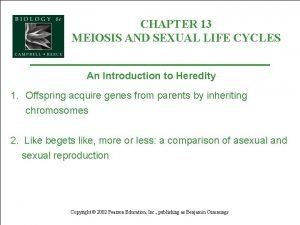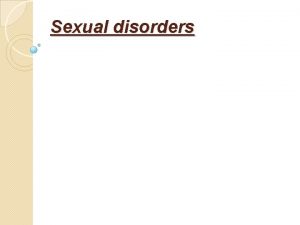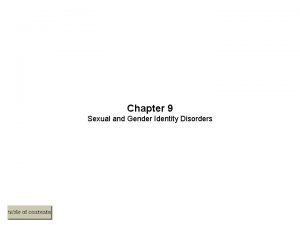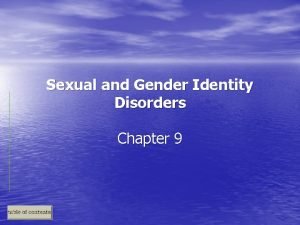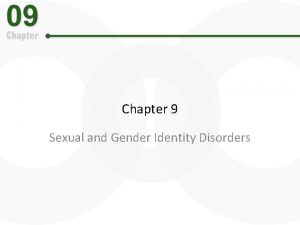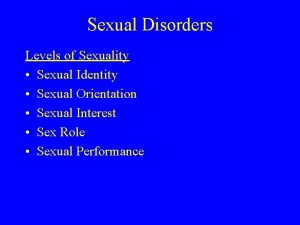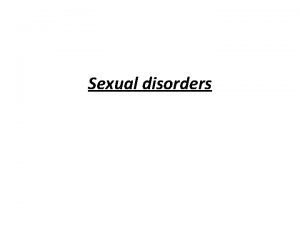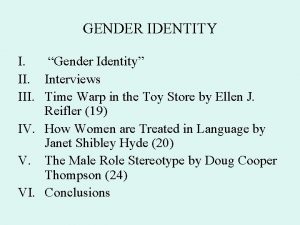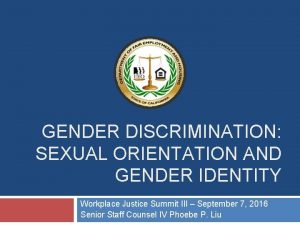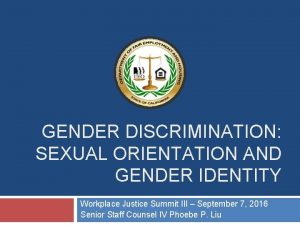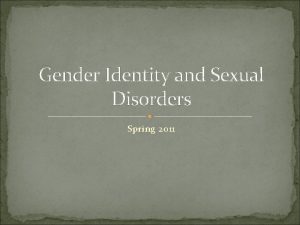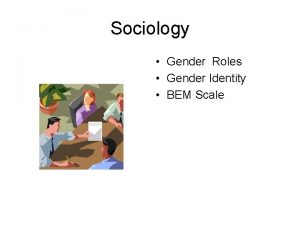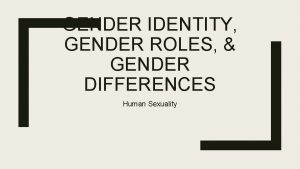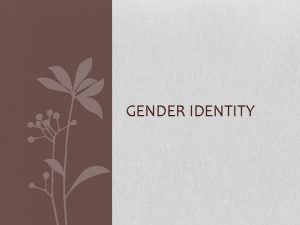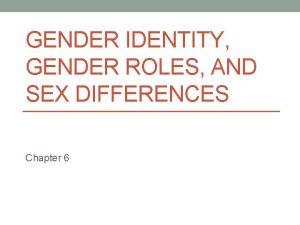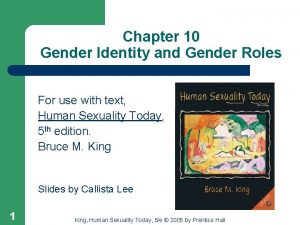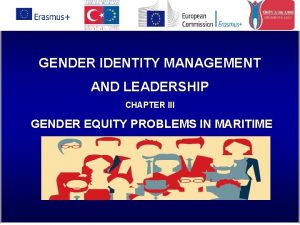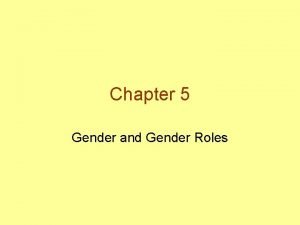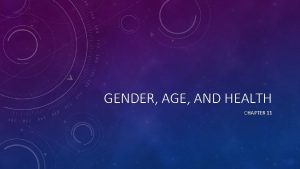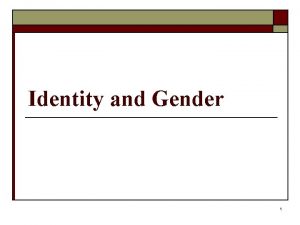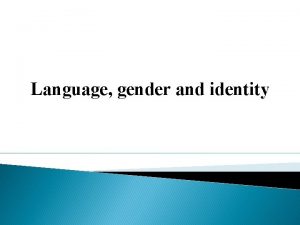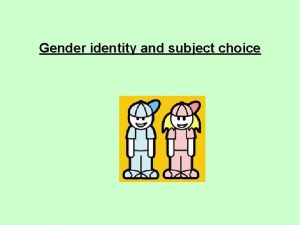Chapter 9 Sexual and Gender Identity Disorders Sexual















































- Slides: 47

Chapter 9 Sexual and Gender Identity Disorders

Sexual and Gender Identity Disorders: An Overview • What Is “Normal” vs. “Abnormal” Sexual Behavior? – Normative facts and statistics – Cultural considerations – Gender differences in sexual behavior and attitudes

Sexual and Gender Identity Disorders: An Overview (continued) • The Development of Sexual Orientation – Complex interaction of bio-psycho-social influences – The example of homosexuality • DSM-IV-TR Sexual and Gender Identity Disorders – Gender identity disorder – Sexual dysfunctions – Paraphilias

Defining Gender Identity Disorder • Clinical Overview – Trapped in the Body of the Wrong Sex – Assume the identity of the desired sex – Goal is not sexual • Causes are Unclear – Gender identity develops between 18 months and 3 years of age

Defining Gender Identity Disorder (continued) • Sex-Reassignment as a Treatment – Who is a candidate? – Basic prerequisites before surgery – 75% report satisfaction with new identity – Female-to-male conversions adjust better • Psychosocial Treatment – Realign psychological gender with biological sex – Few large scale studies

Overview of Sexual Dysfunctions • Sexual Dysfunctions – Involve Desire, Arousal, and/or Orgasm – Pain associated with sex can lead to additional dysfunction

Overview of Sexual Dysfunctions (continued) • Males and Females Experience Parallel Versions of Most Dysfunctions – Affects about 43% of all females and 31% of males – Most prevalent class of disorder in the United States

Overview of Sexual Dysfunctions (continued) • Classification of Sexual Dysfunctions – Lifelong vs. acquired – Generalized vs. situational – Psychological factors alone – Psychological factors combined with medical condition

Fig. 9. 3, p. 355

Sexual Desire Disorders: An Overview • Hypoactive Sexual Desire Disorder – Little or no interest in any type of sexual activity – Masturbation, sexual fantasies, and intercourse are rare – Accounts for half of all complaints at sexuality clinics – Affects 22% of women and 5% of men

Sexual Desire Disorders: An Overview (continued) • Sexual Aversion Disorder – Also Little interest in Sex – Extreme fear, panic, or disgust • Related to physical or sexual contact – 10% of males • Report panic attacks during attempted sexual activity

Sexual Arousal Disorders • Male Erectile Disorder – Difficulty achieving and maintaining an erection • Female Sexual Arousal Disorder – Difficulty achieving and maintaining adequate lubrication

Sexual Arousal Disorders (continued) • Associated Features of Sexual Arousal Disorders – Problem is arousal, not desire – Problem affects about 5% of males, 14% of females – Males are more troubled by the problem than females – Erectile problems are the main reason males seek help

Orgasm Disorders • Inhibited Orgasm: Female and Male Orgasmic Disorder – No orgasm despite adequate sexual desire and arousal – Rare condition in adult males – Most common complaint of adult females

Orgasm Disorders (continued) • Premature Ejaculation – Ejaculation occurring too soon – Most prevalent sexual dysfunction in adult males • Affects 21% of all adult males • Most common in younger, inexperienced males – Problem tends to decline with age

Sexual Pain Disorders • Defining Features – Marked Pain During Intercourse • Dyspareunia – Extreme pain during intercourse • Affects 1% to 5% of men and about 10% to 15% of women – Adequate sexual desire – Adequate ability to attain arousal and orgasm – Must rule out medical reasons for pain

Sexual Pain Disorders • Vaginismus – Limited to females – Outer third of the vagina undergoes involuntary spasms – Complaints include • Feeling of ripping, burning, or tearing – Affects over 5% of women seeking treatment

Sexual Pain Disorders (continued) – Prevalence rates are higher • In more conservative countries and subgroups

Assessing Sexual Behavior • Comprehensive Interview – Detailed history of sexual behavior, lifestyle, and associated factors • Medical Examination – Must rule out potential medical causes of sexual dysfunction

Assessing Sexual Behavior (continued) • Psychophysiological Evaluation – Exposure to erotic material – Determine extent and pattern of sexual arousal – Males – Penile strain gauge – Females – Vaginal photoplethysmograh

Causes and Treatment of Sexual Dysfunction • Biological Contributions – Physical disease, medical illness, prescription medications – Use and abuse of alcohol and other drugs

Causes and Treatment of Sexual Dysfunction (continued) • Psychological Contributions – The role of “anxiety” vs. “distraction” – The nature and components of performance anxiety – Psychological profiles associated with sexual dysfunction

Causes and Treatment of Sexual Dysfunction (continued) • Social and Cultural Contributions – Erotophobia – Learned negative attitudes about sexuality – Negative or traumatic sexual experiences – Deterioration of interpersonal relationships, lack of communication

Fig. 9. 5, p. 366

Treatment of Sexual Dysfunction • Education Alone – Is surprisingly effective • Masters and Johnson’s Psychosocial Intervention – Education – Eliminate performance anxiety • Sensate focus and nondemand pleasuring

Treatment of Sexual Dysfunction (continued) • Additional Psychosocial Procedures – Squeeze technique – Premature ejaculation – Masturbatory training – Female orgasm disorder – Use of dilators – Vaginismus – Exposure to erotic material – Low sexual desire problems

Medical Treatment of Sexual Dysfunction • Erectile Dysfunction – Viagra – Is it really the wonder drug? – Injection of vasodilating drugs into the penis – Penile prosthesis or implants – Vascular surgery – Vacuum device therapy • Few Medical Procedures Exist for Female Sexual Dysfunction

Paraphilias: Clinical Descriptions and Causes • Nature of Paraphilias – Misplaced Sexual Attraction and Arousal – Focused on inappropriate people, or objects – Often multiple paraphilic patterns of arousal – High comorbidity • With anxiety, mood, and substance abuse disorders

Paraphilias: Clinical Descriptions and Causes (continued) • Main Types of DSM-IV-TR Paraphilias – Fetishism – Voyeurism – Exhibitionism – Transvestic fetishism – Sexual sadism and masochism – Pedophilia

Fetishism • Fetishism – Sexual attraction to nonliving objects – Objects can be inanimate and/or tactile • Examples – May include rubber, hair, feet, objects such as shoes • Numerous targets of fetishistic arousal, fantasy, urges, and desires

Voyeurism and Exhibitionism • Voyeurism – Observing an unsuspecting individual undressing or naked – Risk associated with “peeping” is necessary for sexual arousal • Exhibitionism – Exposure of genitals to unsuspecting strangers – Element of thrill and risk is necessary for sexual arousal

Transvestic Fetishism • Transvestic Fetishism – Sexual arousal with the act of crossdressing – Males may show highly masculine compensatory behaviors • Most do not show compensatory behaviors – Many are married and the behavior is known to spouse

Sexual Sadism and Sexual Masochism • Sexual Sadism – Inflicting pain or humiliation to attain sexual gratification • Sexual Masochism – Suffer pain or humiliation to attain sexual gratification

Sexual Sadism and Sexual Masochism (continued) • Relation Between Sadism and Rape – Some rapists are sadists – Most rapists do not show paraphilic patterns of arousal – Rapists tend to show sexual arousal • To violent sexual and non-sexual material

Pedophilia • Overview – Pedophiles – Sexual attraction to young children – Incest – Sexual attraction to one’s own children – Victims • Male and/or female children or very young adolescents – Pedophilia is rare, but not unheard of, in females

Pedophilia (continued) • Associated Features – Most perpetrators are male – Incestuous males may be aroused by adult women – Male pedophiles are not aroused by adult women – Most rationalize the behavior • Often engage in other moral compensatory behavior

Pedophilia: Causes and Assessment • Causes of Pedophilia – Associated with sexual and social problems and deficits – Patterns of inappropriate arousal and fantasy • May be learned early in life – High sex drive, coupled with suppression of urges

Pedophilia: Causes and Assessment (continued) • Psychophysiological Assessment of Pedophilia – Deviant patterns of sexual arousal – Desired sexual arousal to adult content – Social skills Deficits – Have Difficulties Forming Appropriate Adult Relationships

Fig. 9. 6, p. 377

Pedophilia: Psychosocial Treatment • Psychosocial Interventions – Most are behavioral – Target deviant and inappropriate sexual associations – Covert sensitization – Imagining aversive consequences

Pedophilia: Psychosocial Treatment (continued) – Orgasmic reconditioning – Masturbation + appropriate stimuli – Family/marital therapy – Address interpersonal problems – Coping and relapse prevention – Selfcontrol and risk management

Pedophilia: Psychosocial Treatment (continued) • Efficacy of Psychosocial Interventions – About 70% to 100% of cases show improvement – Poorest outcomes – rapists/multiple paraphilias – Run a chronic course with high relapse rates

Pedophilia: Drug Treatments • Medications: The Equivalent of Chemical Castration – Often used for dangerous sexual offenders

Pedophilia: Drug Treatments (continued) • Types of Available Medications – Cyproterone acetate • Anti-androgen, reduces testosterone, sexual urges and fantasy – Medroxyprogesterone acetate • Depo-provera, also reduces testosterone – Triptoretin • A newer and more effective drug that inhibits gonadtropin secretion

Pedophilia: Drug Treatments (continued) • Efficacy of Medication Treatments – Drugs work to greatly reduce sexual desire, fantasy, arousal – Relapse rates are high with medication discontinuation

Summary of Sexual and Gender Identity Disorders • Gender Identity and Gender Identity Disorder – Problem is not sexual – Feeling trapped in body of wrong sex • Sexual Dysfunctions are Common in Men and Women – Problems with desire, arousal, and/or orgasm

Summary of Sexual and Gender Identity Disorders (continued) • Paraphilias Represent Inappropriate Sexual Attraction – Desire, arousal, and orgasm gone awry • Available Psychosocial and Medical Treatment Options – Are Generally Efficacious – Comprehensive assessment and treatment approaches are best
 Sexual orientation gender identity
Sexual orientation gender identity Strategic gender needs and practical gender needs
Strategic gender needs and practical gender needs Sexual orientation ap psychology definition
Sexual orientation ap psychology definition Gender-role development
Gender-role development Gender dysphoria dsm 5
Gender dysphoria dsm 5 Gender identity
Gender identity Gender identity tagalog
Gender identity tagalog Personal identity map
Personal identity map Retention hyperkeratosis dermnet
Retention hyperkeratosis dermnet Chapter 6 musculoskeletal system diseases and disorders
Chapter 6 musculoskeletal system diseases and disorders Chapter 46 digestive and endocrine disorders
Chapter 46 digestive and endocrine disorders Chapter 29 somatic symptom and dissociative disorders
Chapter 29 somatic symptom and dissociative disorders Chapter 29 endocrine and metabolic disorders
Chapter 29 endocrine and metabolic disorders Chapter 21 mental health diseases and disorders
Chapter 21 mental health diseases and disorders Chapter 18 eating and feeding disorders
Chapter 18 eating and feeding disorders Chapter 17 reproductive system diseases and disorders
Chapter 17 reproductive system diseases and disorders Chapter 15 nervous system diseases and disorders
Chapter 15 nervous system diseases and disorders Chapter 15 anxiety and obsessive-compulsive disorders
Chapter 15 anxiety and obsessive-compulsive disorders Chapter 11 childhood and neurodevelopmental disorders
Chapter 11 childhood and neurodevelopmental disorders Elsevier
Elsevier Milady chapter 10 review questions
Milady chapter 10 review questions Plicatured nail
Plicatured nail Cardiovascular system diseases and disorders chapter 8
Cardiovascular system diseases and disorders chapter 8 Milady chapter 8 skin disorders and diseases
Milady chapter 8 skin disorders and diseases Chapter 47 urinary and reproductive disorders
Chapter 47 urinary and reproductive disorders Managing weight and eating behaviors
Managing weight and eating behaviors 10 diseases of lymphatic system
10 diseases of lymphatic system Chapter 10 sex gender and sexuality
Chapter 10 sex gender and sexuality Chapter 11 gender age and health review worksheet answers
Chapter 11 gender age and health review worksheet answers Medical model psychology
Medical model psychology Concept mapping chapter 11 genetic disorders
Concept mapping chapter 11 genetic disorders Chapter 18 psychological disorders
Chapter 18 psychological disorders Chapter 14 psychological disorders
Chapter 14 psychological disorders Chapter 14 depressive disorders
Chapter 14 depressive disorders Chapter 5 lesson 2 mental disorders
Chapter 5 lesson 2 mental disorders Chapter 5 lesson 4 mental and emotional problems
Chapter 5 lesson 4 mental and emotional problems Chapter 14 psychological disorders
Chapter 14 psychological disorders Ap psychology chapter 15
Ap psychology chapter 15 Chapter 55 care of patients with stomach disorders
Chapter 55 care of patients with stomach disorders Chapter 17 somatic symptom disorders
Chapter 17 somatic symptom disorders Chapter 12 schizophrenia spectrum disorders
Chapter 12 schizophrenia spectrum disorders Is schizophrenia on a spectrum
Is schizophrenia on a spectrum Pedigree miscarriage symbol
Pedigree miscarriage symbol Chapter 10 sexual reproduction and genetics
Chapter 10 sexual reproduction and genetics Chapter 13: meiosis and sexual life cycles
Chapter 13: meiosis and sexual life cycles Chapter 13 meiosis and sexual life cycles
Chapter 13 meiosis and sexual life cycles Health and social care unit 14 coursework
Health and social care unit 14 coursework Bipolar and other related disorders
Bipolar and other related disorders




